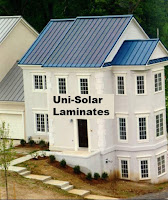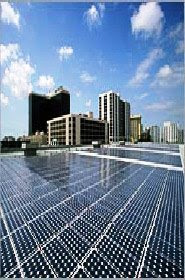
Lessons for Other States
When Hiram Johnson, progressive governor of California from 1911-1917, added the state initiative (plus the referendum and recall) to allow for more "direct democracy", I wonder if he ever thought it would provide an avenue for rich out-of-staters to cash in on the Golden State. Propositions 7 and 10, if passed next Tuesday, could richly swell the coffers of an Arizona and a Texas billionaire. Furthermore, I wonder if he and his contemporaries could foresee California's collective influence on other states.
Proposition 7, the Solar and Clean Energy Act, is described in the CA 2008 Official Voter Information Guide and is supposedly intended to reduce use of coal, nuclear power and offshore drilling by increasing installations of solar and wind power.
However, Prop 7 favors large, utility-scale installations of 30MW or more. Today, 60% of all solar contracts are for smaller PV systems. This could force small renewable energy companies (dealer-installers) out of the California market, reducing competition and jobs. (This can already be seen on large projects where only SunPower, SPG Solar and Sun Edison corner the market.) There is no wording in Prop 7 to limit increases in electricity bills and it allows power providers to always charge 10% above market price for power, stifling competition for more renewable energy. Basically, Prop 7 would make the state more dependent on electricity from Arizona--power produced from coal and nuclear plants. Both state Democratic and Republican parties are against Prop 7 as are the CA League of Conservation Voters, CA Taxpayers Assn, even the state's investor-owned utilities, SCE, PG&E and SDG&E.
Proposition 10, the Alternative Fuel and Renewable Energy Act, is what might be called Prop Pickens. That's because Texas billionaire T. Boone Pickens shelled out $3 million to get this initiative on the ballot. Prop 10 would take some $10 billion CA taxpayer dollars to subsidize large vehicles and trucks to run on natural gas, much of which is sold by, of course, Mr. Pickens. Despite claims to the contrary, the initiative is craftily written to exclude hybrids, plug-in hybrids, electric cars and true alternative fuels like vegetable oil and hydrogen.
Granted, natural gas burns cleaner than gasoline or diesel but it still is a fossil fuel that emits CO2 at combustion. Calling natural gas an alternative fuel is somewhat deceptive when the goal is to eliminate greenhouse gas emissions. All in all, Prop 10 asks $9.8 billion from CA taxpayers: $5 billion in a 30-year bond from state's General Fund to which must added $4.8 billion in interest. This, from a state currently enduring an $8 billion budget shortfall.
Widespread Ramifications
More and more states are adopting clean energy portfolios that mandate less coal- (and nuclear) produced power for more natural-gas produced power. With more utilities switching to natural gas AND an increased demand from the transportation sector, the cost for this resource could become staggering and soon. Higher electricity bills and pricier natural-gas tankfulls are sure to follow.
As the energy paradigm shifts, we must constantly be vigilant of which "green" initiatives support the common good: The green that means clean, renewable energy for everyone or the green that lines the pockets of the supremely wealthy few.



















